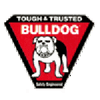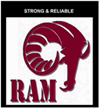How To Select Tubular Axles and Running Gear
1. How to Determine the Gross Vehicle Weight (GVW)
When building a trailer, the total Gross Vehicle Weight (GVW) must be determined
in order to select the right axle or axles for the application. GVW includes the weight
of the empty trailer and the weight of the intended cargo. (Example: 2,000 lb. empty
trailer weight + 8,000 lbs. cargo = GVW of 10,000 lbs.)
2. How Many Axles?
After determining the GVW, the number and capacity of the axles must be selected. For example, if you
want 10,000 lb. GVW and want tandem axles, the minimum required capacity is 5,000 lb. per axle.
3. Brakes?
First, determine if you want brakes on each axle. Most states require by law that at least one axle has brakes.
Some states require that all axles have brakes. To determine how many brakes are necessary in a state, contact
the local Department of Motor Vehicles. Second, determine what type of brake you prefer: Electric,
Hydraulic Single Servo, Hydraulic Free-Backing, Hydraulic Duo Servo, Hydraulic Disc or Air "S" Cam
Brakes.
4. Which Type of Spindles Are Going To Be Required?
Straight spindles are used mostly when the bed is over the tires or when low ground clearance is not
required. Examples are flat beds, pull-type utility trailers, etc.
Drop spindles are used when the lowest possible ground clearance is desired. Examples are Livestock and
Horse Trailers, Car Haulers, Enclosed Cargo Van Trailers, etc.
5. What Are the Spring Centers?
Spring Centers are the CL (center line) measurement of the Spring Mounting Pads on the axle. Spring centers
are usually matched to the approximate frame width of the trailer.
6. Which Bolt Pattern?
The next step is to determine the length of the axle. Of the several ways and industry terms to describe this
procedure, the most popular term is "Hub Face," which is the measurement from the base of the wheel stud
to the base of the wheel stud on the opposite end of the axle. Another term frequently used is "Track".
Track is the center of the tire to the center of the opposite tire. This measurement varies depending on what
type of wheel is used, because each type of wheel (White Spoke, O.E.M., Custom) could have a different offset,
changing the tire center.
7. What is the Length of the Axle?
The next step is to determine the length of the axle. Of the several ways and industry terms to describe this procedure, the most popular term is "Hub Face," which is the measurement from the base of the wheel stud to the base of the wheel stud on the opposite end of the axle. Another term frequently used is "Track". Track is the center of the tire to the center of the opposite tire. This measurement varies depending on what type of wheel is used, because each type of wheel (White Spoke, O.E.M., Custom) could have a different offset, changing the tire center.
8. Which Type of Springs?
There are two basic types of springs to choose from: Double Eye or Slipper Springs. Double Eye Springs
are used with the shackle-type suspensions. Slipper Springs are the heavy-duty springs used with slipper type
suspensions. Complete sets of springs and u-bolt kits can be ordered with axles.
9. Which Hanger Kit?
There are several Hanger Kits to choose from - single, tandem or triple for both double eye and slipper
springs. Hanger Kits consist of Spring Hangers that attach to the frame, Equalizers (tandem or triple Hanger
Kits), Shackle Straps (if double eye springs) and all the necessary hardware.















